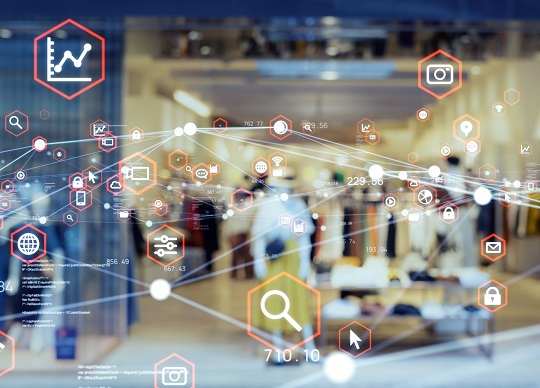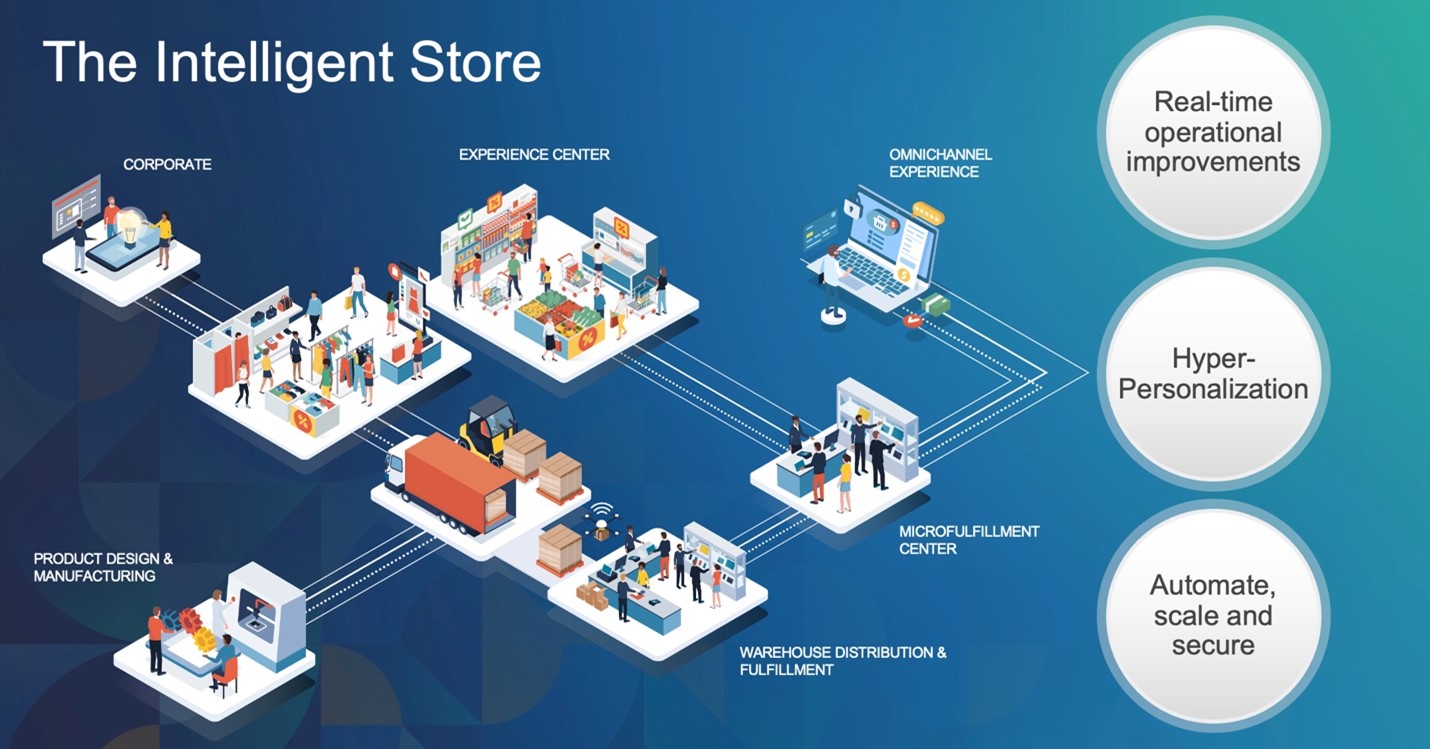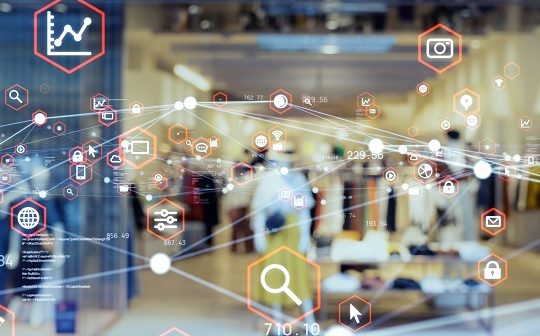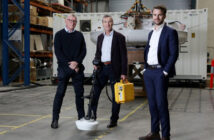
Byline: Chandra Venkatapathy, CTO Retail Industry Solutions, Dell Technologies
Retailers who successfully leverage computer vision with diagnostic, proactive and predictive analytics are gaining the much-needed competitive edge. They set themselves apart by being able to identify trends, predict outcomes and deliver the type of real-time applications and services that keep customers coming back. Beyond meeting consumer demand, these computer vision systems are becoming instrumental in bolstering security, maximizing sales, implementing proactive inventory management, enhancing sustainability and improving employee productivity. In this article, we take a closer look at how computer vision in partnership with advanced analytics capabilities is and will continue to redefine the industry.
Increasing margins is critical to achieving sustained success in the retail industry.To maximize margins, leaders consider how to run the store more efficiently, how to deliver the best services to customers and how to grow new services. Traditionally, they have used rearview mirror data to help accomplish these goals—that is, examining historical data from months prior and coming up with a plan.
Today, retailers are relying more on proactive and contextual data in real-time. For instance, what are the online shopper’s preferences? Do they tend to buy button-down shirts and khakis or jeans and t-shirts? How does a brick-and-mortar store’s layout affect purchasing decisions? Context involves gathering data about human behavior throughout the customer journey to figure out why they buy what they buy. But how do you capture human emotions and activities in the moment, and then turn that data into useful information? How do you account for changes in behavior and preferences over time?
Obtaining the right insights, consistently, at a micro level about the consumer is key to delivering a more meaningful and personalized customer experience. Combining consumer shopping preferences with historical data can give you a contextually-rich, action-reaction paradigm. To accomplish this, retailers are turning to computer vision complemented by artficial intelligence.
Watch the video: Reimagine the Future of Retail
Computer vision provides video and audio for additional context, complementing other types of data. Together, these data points become part of an analytics workflow delivering a tangible outcome. Using a federated approach, data can be analyzed where it is collected, producing insights used to make decisions in real time.
This federated approach to analytics enables forward-thinking retailers to incorporate new approaches to using and orchestrating their data, using computer vision systems that grow as they grow. New use cases are more achievable, and IT can leverage these technologies to scale and drive further processes that enhance their momentum towards achieving the digitally-driven store of the future.
Let’s look at how computer vision is impacting the customer experience, store security and operations, revenue growth and sustainability today and what that means going forward.
Continuing to address a top priority for the retail industry by improving safety and security
Most retail establishments started their computer vision journey years ago when they brought in video camera systems for security purposes, providing them with a foundation to build on. Now it’s paying off.
When tied to a computer vision system, the visual data, historical data and AI can offer real-time situational awareness. Analysis occurs mainly onsite, at the edge It’s quick and accurate, reducing response time by staff. For example, a maintenance crew member can react almost immediately to spilled substances that could cause an accident. Anomaly detection can enhance a store’s loss prevention processes such as alerting security personnel to people who are concealing stolen items and real-time video analytics platform can even help with finding missing children.
Tackling current and future operational efficiency challenges
With accurate data, managers today can utilize hyper-personalization to drive more sales, demand forecasting to maintain inventories and optimized route planning to cut costs. For this you need real-time insights using sensors and cameras, and a strategy that aligns operations with the customer experience, autonomous retail and a host of integrated technologies to make it all happen.

“Figure 1. The Intelligent Store extends across all facets of the retail industry to deliver benefits including real-time operational improvements, hyper-personalization and automation, scalability and security.”
One goal of an Intelligent Store is to empower customers by reducing friction in the buying experience. That means touchless checkout, where items are “rung up” automatically as customers leave the store. For staffed checkouts, computer vision can monitor customer lines and move staff where needed in real time. Video-based inventory tracking ensures items are always in stock and enables traceability, as well as optimized picking for fulfilling ecommerce grocery orders. And curbside delivery is improved by combining visual data such as number plate and/or vehicle recognition, and sensor data so staff begin preparing to deliver groceries as soon as a customer drives into the lot.
The digital twin is another technology that boosts operational efficiency. Using software models, a retailer can run simulations of a real-world environment before committing to expensive changes. Imagine a designer creating a store planogram or distribution center in 3D, and using AI to determine the freshness of perishable items (to reduce spoilage), to optimize customer flow and merchandising, and for predictive analysis. A digital twin can be rendered onsite without the need to exchange huge amounts of data with a data center as the processing occurs at the edge.
Watch the video: Edge and computer vision are enabling better Retail
Enhancing the customer experience while increasing revenues
Happy customers inevitably buy more, so it is up to retailers to provide the right product with the right value. And by investing in the customer experience, revenues will automatically be maximized.
Consider virtual try-on, which combines computer vision, AI and augmented reality to allow shoppers to try on glasses, clothing and other items using their mobile device’s camera or an in-store digital kiosk or mirror. “See it in your room” for furniture and electronics is similar. Virtual try-on is both immersive and a time-saver for customers, potentially resulting in higher per-session sales.
Computer vision systems linked to inventory management systems is also a boon for the customer experience and optimization of revenue. Where cameras are used to scan existing inventory and update records, stock level checks are more accurate, helping to ensure the customer’s item isn’t backordered. Automatic updates to inventory after sales are completed saves on back-house time. From a merchandising perspective, computer vision can identify which areas of a store gets the most foot traffic and target hot spots where product should be placed.
On the flip side is how to avoid losing revenue. Shrinkage in the global retail sector accounts for a staggering $100 billion USD* in annual losses, creating demand for technology and/or processes to prevent theft and fraud, and to better secure transactions. Many grocery stores now use cameras mounted at checkout stations to watch for sweetheart checking, prevent or detect item swapping and identify inaccurate scanning and payments.
Read the IDC Whitepaper “Future Loss Prevention: Advancing Fraud Detection Capabilities at self-checkout and throughout the retail store”
Becoming environmental stewards and following sustainability practices
Many corporations today support initiatives to conserve resources and reduce waste. Computer vision is helping stores, malls, distribution centers and the like accomplish their sustainability goals.
The retail industry has several avenues to sustainability. Two of the most constructive are reducing energy consumption and using modern inventory management techniques.
Most of us are familiar with refrigerated cases with motion sensors that turn the lights on when a door is opened. Entire facilities can use the same principles, like smart HVAC and overhead and outdoor lighting to minimize power consumption.
Reducing food waste is another way to save money while having a positive impact on the community and environment. According to RTS, about 30% of the food in U.S. grocery stores is thrown away every year. Optimized cold chain management reduces spoilage as well as the energy needed to maintain perishables from the loading dock to the freezer case or produce bin. Proactive restocking, based on historical data and AI, further ensures that items are available when needed and in sellable quantities for a particular store.
Although the pandemic boosted online and curbside pickup sales, the resulting supply chain issues has left customers somewhat disillusioned and wondering which important item will become hard to get. Customers will accept some inconvenience due to a worldwide event but retailers need to be prepared for the near-term future shopper who has high expectations and whose loyalty may be harder to keep. That can be done through a data-driven approach using computer vision and AI.
Retail organizations can build on the safety and security infrastructure already deployed in their stores and at a pace that’s right for their business. Digital transformation is an on-going process and many retailers are already engaged with Dell Technologies in developing the right framework to guide them through their journey, while enabling their business to remain agile and innovate.
For an overview of computer vision and its impact on retail, read the Solution Brief “ Protecting retails assets and unlocking the potential of your data with AI-driven Computer Vision.”
Learn more about how computer vision is positively impacting other industries::
- The Future Is Computer Vision – Real-Time Situational Awareness, Better Quality and Faster Insights
- Computer Vision Is Transforming the Transportation Industry, Making It Safer, More Efficient and Improving the Bottom Line
- How Computer Vision is revolutionizing the Manufacturing Supply Chain
- How the Sports and Entertainment Industry Is Reinventing the Fan Experience and Enhancing Revenues with Computer Vision
* Sensormatic Global Shrink Index: https://www.sensormatic.com/landing/shrink-index-sensormatic






